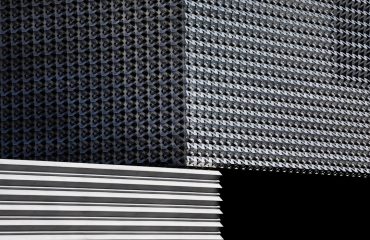The automotive industry, construction sector, and countless other manufacturing fields rely heavily on Original Equipment Manufacturer (OEM) steel components. These are the crucial parts, often unseen, that form the backbone of countless products. Understanding the intricacies of their production is key to comprehending the supply chains and technological advancements driving modern manufacturing.
1. The Steel Selection Process: Choosing the Right Material for the Job
Selecting the appropriate steel grade is paramount in OEM steel component production. The choice depends on a multitude of factors including the component’s intended application, required strength, durability, and cost considerations. Different steel grades possess varying properties: some excel in tensile strength, others in impact resistance, and still others in corrosion resistance. For example, high-carbon steel might be ideal for high-stress applications like crankshafts in engines, while low-carbon steel might suffice for less demanding parts. The selection process often involves rigorous material testing and simulations to ensure the chosen steel meets and exceeds performance expectations. This stage also involves careful consideration of potential environmental impacts and the sustainability of the chosen steel grade.
2. Manufacturing Processes: From Raw Material to Finished Component
OEM steel component production utilizes a diverse range of manufacturing processes, each tailored to the specific design and required properties of the component. Common methods include:
- Forging: This process involves shaping the steel using compressive forces, resulting in high strength and density. Forging can be performed hot or cold, depending on the steel grade and desired outcome.
- Casting: Molten steel is poured into a mold, allowing it to solidify into the desired shape. Casting is suitable for complex shapes but may result in lower strength compared to forging.
- Rolling: Steel is passed through rollers to reduce its thickness and create a desired shape. This method is efficient for producing long, consistent parts.
- Machining: This subtractive manufacturing process uses tools to remove material from a pre-formed component to achieve precise dimensions and surface finishes. CNC machining allows for highly accurate and complex parts.
- Stamping: Sheet metal is formed into shapes using dies. This process is highly efficient for mass production of relatively simple parts.
The selection of the manufacturing process is crucial for optimizing cost, efficiency, and product quality. Often, a combination of processes is employed to achieve the desired outcome.
3. Quality Control and Assurance: Ensuring Consistent Excellence
Maintaining stringent quality control throughout the entire production process is crucial for OEM steel component production. This involves regular inspections at various stages, from incoming raw material inspection to final product testing. Methods employed include:
- Dimensional inspection: Verifying that the component’s dimensions conform to the specified tolerances.
- Material testing: Assessing the mechanical properties of the steel, such as tensile strength, yield strength, and hardness.
- Non-destructive testing (NDT): Utilizing techniques like ultrasonic testing, radiographic testing, and magnetic particle inspection to detect internal flaws without damaging the component.
- Surface finish inspection: Evaluating the surface quality for imperfections, such as scratches, pitting, or corrosion.
- Statistical Process Control (SPC): Using statistical methods to monitor and control the manufacturing process, minimizing variation and ensuring consistent quality.
Robust quality control procedures are essential for ensuring the reliability and safety of the final product and maintaining the reputation of the OEM.
4. The Role of Automation and Advanced Technologies
The OEM steel component production industry is undergoing a significant transformation driven by automation and advanced technologies. Robotics, AI, and machine learning are being increasingly integrated into various stages of the production process, leading to improved efficiency, precision, and consistency. For instance, automated guided vehicles (AGVs) can transport materials and components, while robotic arms can perform complex machining operations with greater speed and accuracy than human workers. Furthermore, advanced simulation and modeling tools allow for the optimization of manufacturing processes and the prediction of potential problems before they occur. The adoption of Industry 4.0 principles is driving a shift towards smart factories, where data is collected and analyzed in real-time to optimize production and improve overall efficiency.
5. The Future of OEM Steel Component Production: Sustainability and Innovation
The future of OEM steel component production is shaped by two key drivers: sustainability and innovation. The industry is increasingly focused on reducing its environmental impact through the use of recycled steel, energy-efficient manufacturing processes, and the reduction of waste. Innovation is also playing a crucial role, with the development of new steel alloys with enhanced properties, such as higher strength-to-weight ratios and improved corrosion resistance. Additive manufacturing (3D printing) is emerging as a promising technology for the production of complex steel components, offering greater design flexibility and reduced material waste. The integration of advanced materials, such as composites and high-strength lightweight alloys, alongside steel, is also expected to play a significant role in shaping the future of the industry. The focus will remain on producing high-quality, cost-effective, and sustainable components that meet the ever-evolving demands of various industries.
Tags: OEM steel components, steel component manufacturing, steel production, automotive steel parts, metal fabrication




